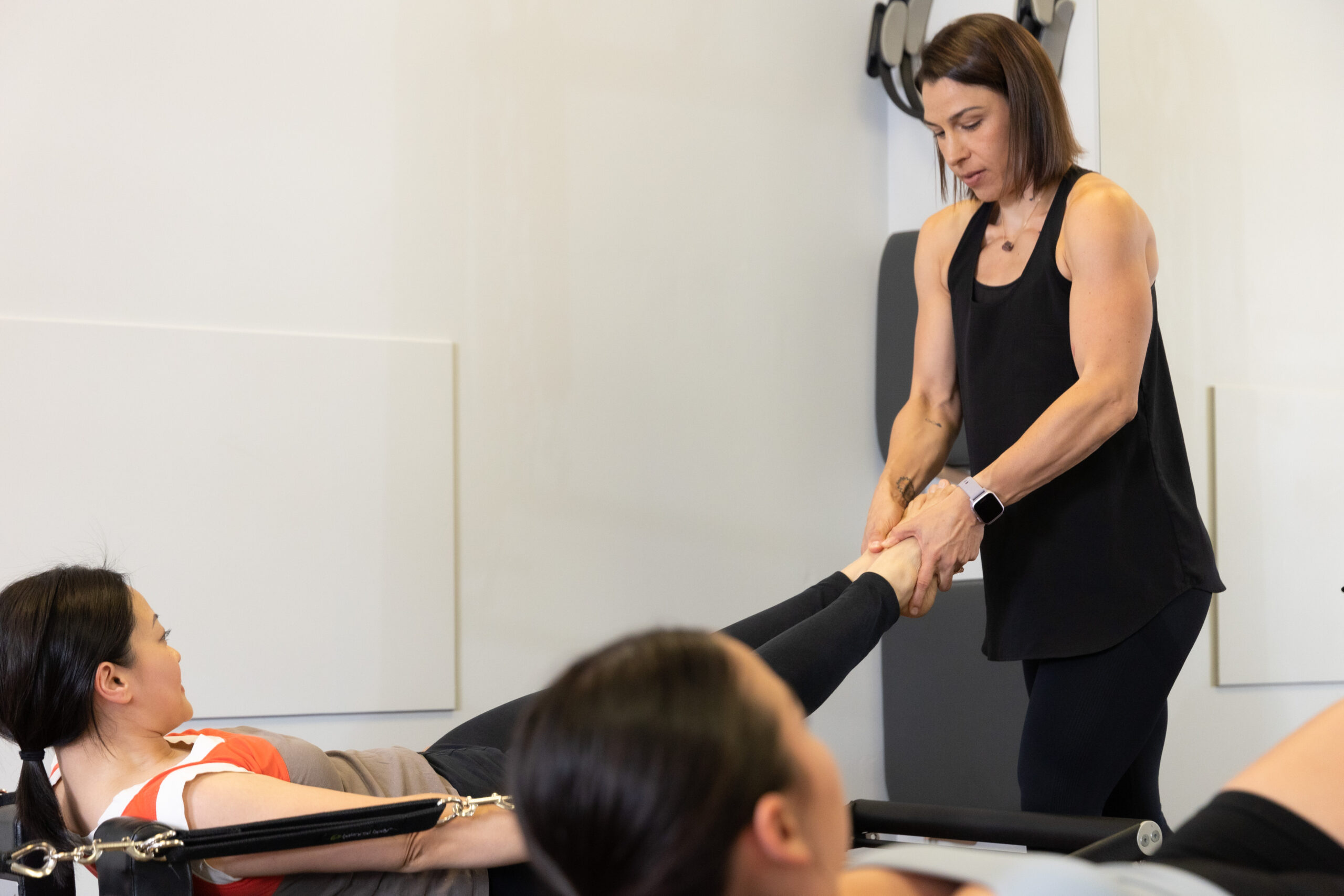I know, I know. You want to jump right to the fancy Pilates exercises you see online. I get it – many of the exercises look impressive and fun to do. Unfortunately, those smooth, controlled movements you see on Instagram take a lot of practice. And that practice begins with the Pilates foundations.
The Power of The Basics
I was listening to a podcast recently where Brené Brown shared how she injured herself playing pickleball. Like many, she fell in love with the sport hard and fast! Unfortunately, she ended up going down in pain. A few months into her healing, she started working with a functional strength coach. He ran her through some movement tests, and she was pleased to hear her score was a ten! Too bad that was ten out of twenty-two!
It turns out that she needed to work on her core strength and how she was moving her body. They started working on very foundational movements, working on form and technique. She wanted to move things along and start lifting heavier, but her coach wasn’t having any of that. This is the part I love most: her trainer said that they first needed to fix her dysfunctional movement patterns first, so they weren’t building upon a rocky foundation. It’s the same thing with Pilates!
Why The Pilates Foundations Matter
This is why we start our new clients out with an Introduction to Pilates series. Not only do we want to get a good feel and understanding of the Pilates foundations, but we also want to understand your imbalances. We all have our imbalances in strength, flexibility, and/or mobility. Some are more dramatic than others, and they can change over time.
When I first discovered Pilates and functional strength training, I was starting to get some imbalances in my own body from 10+ years of teaching aerobics and spin classes. I’d also had three little ones, and the pregnancies and holding-of-babies/toddlers had taken a toll on my body. I had aches and pains, numbness in one shoulder, and my posture wasn’t great.
Fortunately, by finding Pilates and a highly trained teacher and then adding functional strength training, I was able to correct many of those imbalances causing me pain. But, as life happens, I suffered a badly twisted ankle and had achilles injuries, plantar fasciitis, and a few falls. Imbalances may have been the reasons these things occurred. Limping around the house certainly didn’t help the imbalances, either. And what helped me recover in the end? You guessed it – Pilates and functional strength training.
Building Resilience
The Pilates foundations aren’t just for beginners, though. We will often go back to the foundations when we see a client struggling with a more advanced exercise or we catch a movement pattern that is holding them back. We can go back, break things down, and build up to where they need to be. One of my favourite b.Pilates Workshops is called Foundations – Breaking it Down to Build it Up. We can pick almost any exercise in the system to dissect and build upon with the foundations.
That’s the great thing about the foundations: they give you the awareness, control, and strength to move better — both in class and in life.

View comments
+ Leave a comment